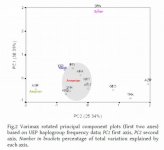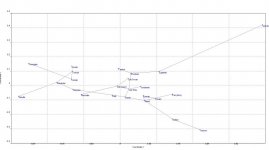The regions of the Caucasus, Anatolia, and the Near East represent an extremely important area with respect to ancient population migration and expansion, and the spread of the Caucasian, Indo-European, Afro-Asiatic, and Altaic languages. We examined genetic variation within and between 12 ethno-territorial populations belonging to four major language families by using six microsatellites, or short tandem repeats (STR) and 12 Unique Event Polymorphism (UEP) loci mapped to the non-recombining portion of the human Y-chromosome. The applied set of markers did not unconditionally support the language replacement hypothesis for the populations under consideration. Moreover, regarding the South Caucasus and Anatolia, our results showed greater genetic distances between the populations from different language families, and close genetic affinity for the populations from the same language group―in this case, for the Turkophone ethnic units. The results point to the importance of appropriate Y- chromosome sampling procedures in geographically structured populations and to the necessity of using a relevant set of markers that provides best discrimination of populations with different genetic histories.
Subjects
DNA has been extracted from...741 informed consenting self-identified ethnic Armenian males at four regional collection areas in Armenia and in the Armenian community of London. Some samples were later discarded because of typing failure, therefore the final number of samples used for the statistical analysis were 734. All samples were segregated to six geographic groups according to paternal grandparental place of birth: “Ararat” (ARA), “Iranian” (IRN), “Karabakh” (KRB), “North” (NRT), “Syunik” (SNK), and “West” (WST) (Fig.1). (Detailed description of regions was given in Weale et al. 2001).
Comparative data sets
We used also DNA samples collected among the Yezidis (YZD) (n=196) and Assyrians (ASR) (n=106) living in Armenia. Comparative data sets included also samples collected from other countries for the same Y-chromosome markers: “Turkey” (TRK), 179 students of Istanbul University; “Azerbaijan” (AZR), 40 residents of the capital city Baku; “Syria”, 72 students of Damascus University; “Georgia” (GEO), 106 students resident in the capital city Tbilisi. Y-chromosome DNA typing results used in this paper have been provided by our colleagues from The Centre for Genetic Anthropology (TCGA) at the University College, London to conduct comparison with the Armenian data. All comparative data sets are unpublished and currently undergoing statistical analysis. The Armenian populations and comparative data sets were classified to four linguistic groups: Indo-European (Armenians and Yezidis), Semitic (Syrians and Assyrians), Turkic (Turks and Azerbaijanis), and South Caucasian (Georgians).
) : http://en.wikipedia.org/wiki/Blond#Geographic_distribution






